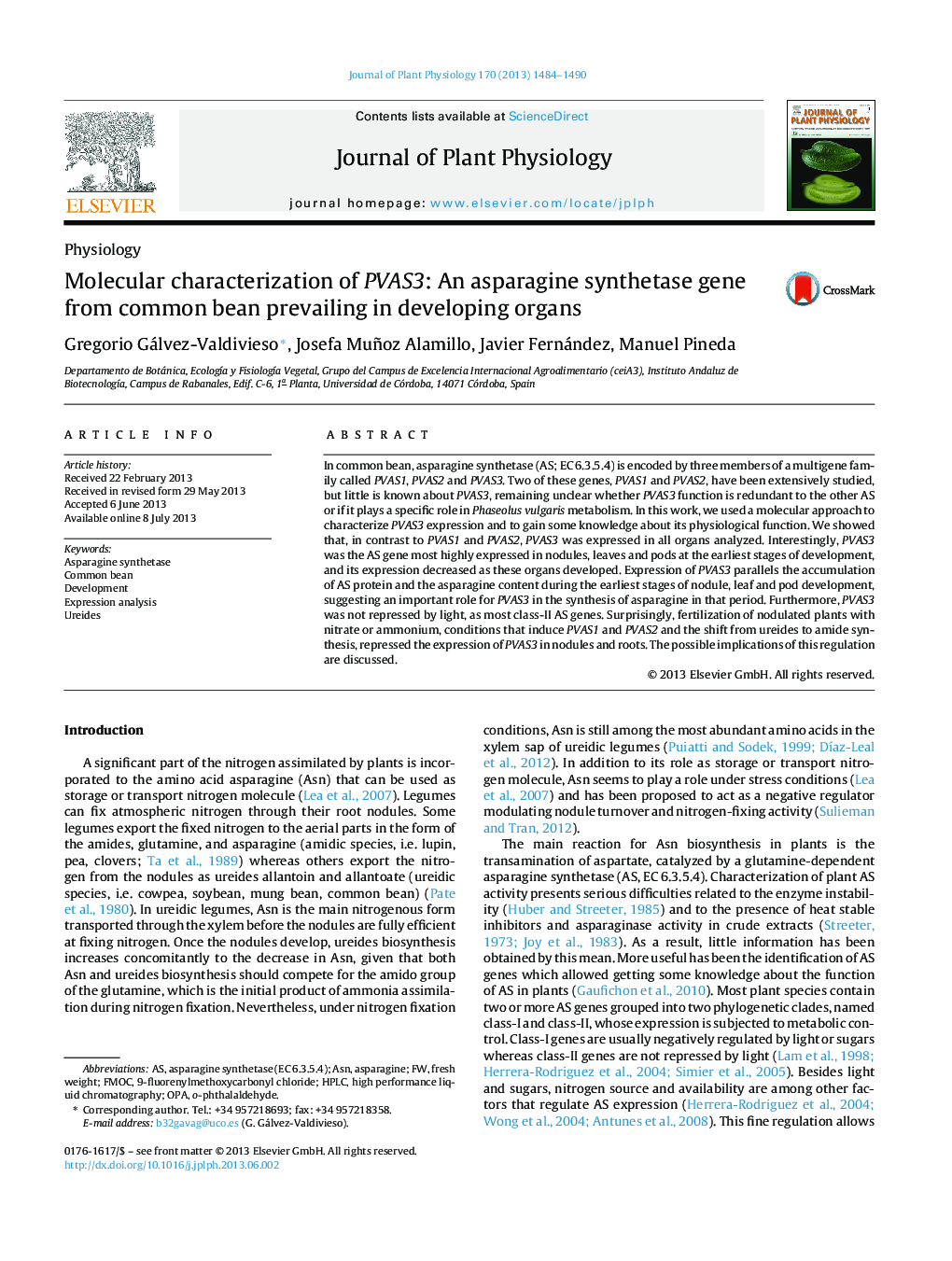| کد مقاله | کد نشریه | سال انتشار | مقاله انگلیسی | نسخه تمام متن |
|---|---|---|---|---|
| 2055948 | 1075791 | 2013 | 7 صفحه PDF | دانلود رایگان |

In common bean, asparagine synthetase (AS; EC 6.3.5.4) is encoded by three members of a multigene family called PVAS1, PVAS2 and PVAS3. Two of these genes, PVAS1 and PVAS2, have been extensively studied, but little is known about PVAS3, remaining unclear whether PVAS3 function is redundant to the other AS or if it plays a specific role in Phaseolus vulgaris metabolism. In this work, we used a molecular approach to characterize PVAS3 expression and to gain some knowledge about its physiological function. We showed that, in contrast to PVAS1 and PVAS2, PVAS3 was expressed in all organs analyzed. Interestingly, PVAS3 was the AS gene most highly expressed in nodules, leaves and pods at the earliest stages of development, and its expression decreased as these organs developed. Expression of PVAS3 parallels the accumulation of AS protein and the asparagine content during the earliest stages of nodule, leaf and pod development, suggesting an important role for PVAS3 in the synthesis of asparagine in that period. Furthermore, PVAS3 was not repressed by light, as most class-II AS genes. Surprisingly, fertilization of nodulated plants with nitrate or ammonium, conditions that induce PVAS1 and PVAS2 and the shift from ureides to amide synthesis, repressed the expression of PVAS3 in nodules and roots. The possible implications of this regulation are discussed.
Journal: Journal of Plant Physiology - Volume 170, Issue 17, 15 November 2013, Pages 1484–1490